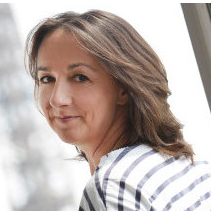Whether you practice your talents as a freelancer, as a business leader or within an administration, I have two simple questions to ask you:
When was the last time you sat in your own waiting room? (If you have ever had this experience…)
Do you know the average waiting time for your visitors?
For the sake of simplicity, I will use this term “visitor” to refer to what your professional body is used to calling clients for some, patients for others, or even audience.
By entering your waiting room, your visitors enter a bit of your home, sometimes symbolically, sometimes literally: my father was a lawyer and since his office was in the same place as his home, the waiting room was the family living room. But unlike him, most of you will probably answer “never” to the first question, and “I don’t know” or “it varies a lot” to the second. On this last one, I’m willing to bet that your visitors would answer “too long”.
And yet this room, your waiting room, is the first milestone in the relationship that will be established between you and your visitors.
Your waiting room speaks of you before you have uttered a single word.
Our brains are formatted to form a negative or positive opinion the second we enter somewhere. A matter of survival. This process is unconscious but very real. So yes, the first impression is fundamental.
Your waiting room is therefore much more than just a room: it becomes a reflection of your professionalism.
Visitors will discover a part of your personality, your tastes, and broadening the perspective, the mission of your company, your firm.
So let the image that comes across be that of someone concerned with the well-being of their visitors, who all have the same need: to be welcomed in the best conditions.
Waiting = stress… or relaxation.
A typical journey for your visitors: after checking in at the reception desk, if you haven’t decentralized it, they will sit in the waiting room.
The waiting time before you come to get them for their appointment varies. Your visitors will have plenty of time to study this room that reveals your ability to welcome them. If you practice a medical or legal profession, it is likely that your visitors will not be completely zen and relaxed. Yet waiting can be a source of frustration and an additional stress factor. And their stress is reflected on you, consciously or not.
And yet… yet… aligned chairs, old tattered magazines, lighting that is too dim or too harsh, audible conversation from the next room, old yellowed photos in mismatched frames on the wall… a cliché of what to avoid and that we have all experienced, just last week in my case.
It seems obvious that the atmosphere should be pleasant, cheerful, and conducive to relaxation.
Concretely, what does that look like?
Comfortable seats, lighting that is not harsh but sufficient for reading without straining the eyes, good sound insulation ensuring the confidentiality of your conversations with your visitors.
You can transform this waiting time into useful information time: flyers related to the reason for their presence, clear signage, display of mandatory legal notices, your diplomas and accreditations, magazines (recent ones please), radio (without commercials, please).
That’s the basics.
But, but, but all of that is not enough: in a survey, visitors from various professional environments listed their needs regarding waiting rooms in order of importance, and in third position, before the view from the windows, wi-fi, water fountain, plants, they advocated for the presence of ART.
Not to mention that Art on prescription, is an idea that’s not so crazy.
“When faced with a work of art that we appreciate, our brain will secrete multiple beneficial neurotransmitters: dopamine, involved in movement and life force; serotonin, often called the ‘happiness hormone’; and endogenous morphine, which calms pain and reduces anxiety,” details neurologist Pierre Lemarquis.
The result of that alchemy is that art enters beings in ways that are not linear and therefore creates a kind of receptivity that open the heart.
Those who know me with my mediator hat on are probably wondering why I’m obsessing over your waiting rooms. I confess, I am also a gallery owner at L’Écume Quantique. My new mission is to help Art penetrate our daily lives, in both the private and professional spheres.
Since your waiting room will reveal your values, your culture, your identity, it must be in perfect harmony with the message you wish to convey. And Art can help you with that. Colors soothe, energize or aid concentration; dark colors make spaces smaller, light colors make them bigger; the colors of the exhibited works can evoke those of your graphic charter if you have one, etc…
Your waiting room can become an area of influence that will either increase your visitors’ confidence in you, or diminish it.
I can help you make this room more welcoming, friendly and show that you care about the well-being of your visitors, even before meeting them.
The wait will seem shorter to them.
… and your office… is Art present there?
Let’s talk about it.
Adeline Guilhen
*Henri Jeanson – artist, writer, journalist, screenwriter (1900 – 1970)







































